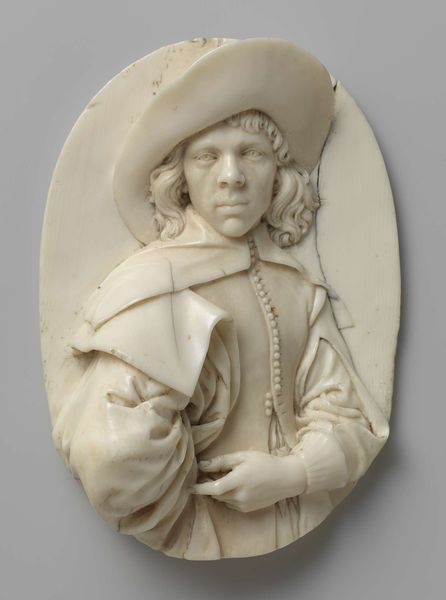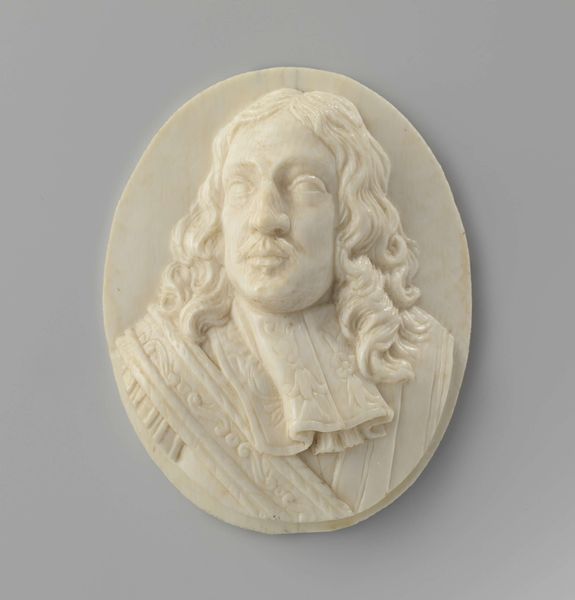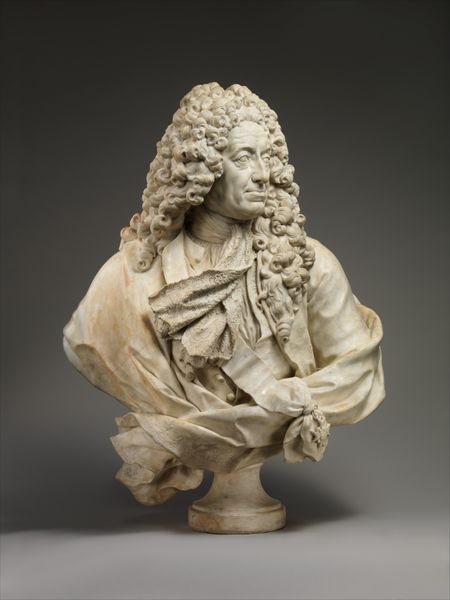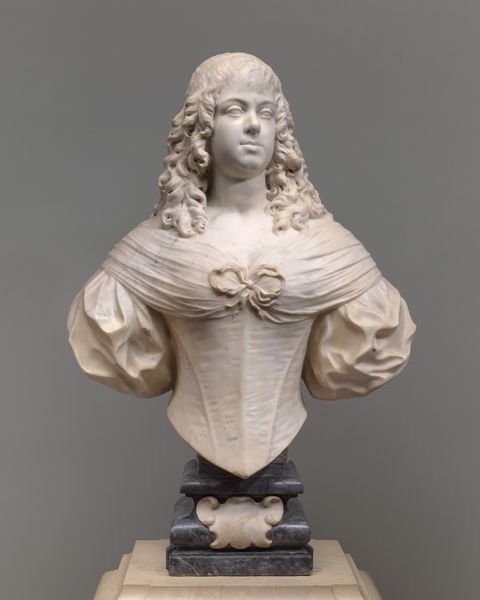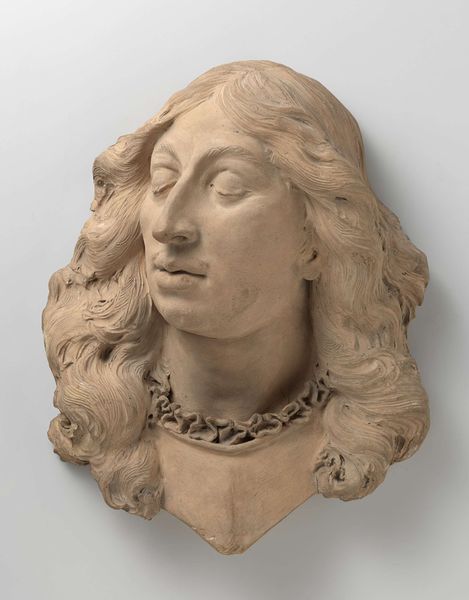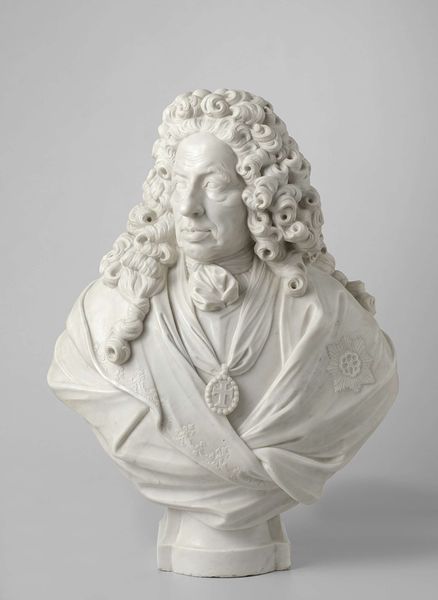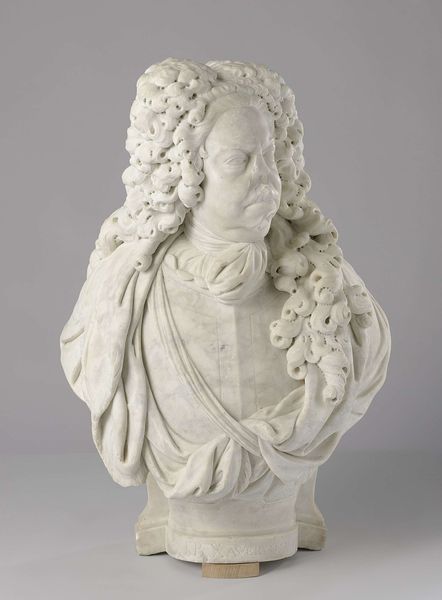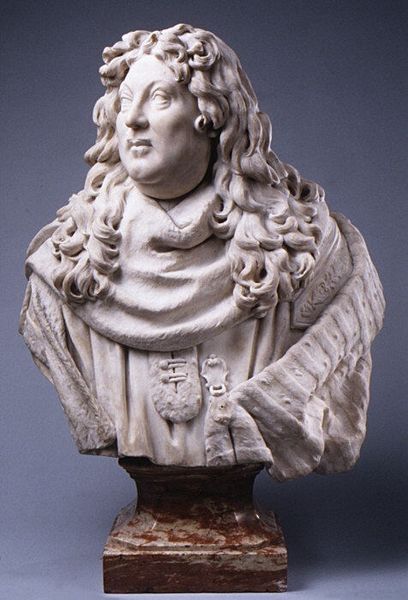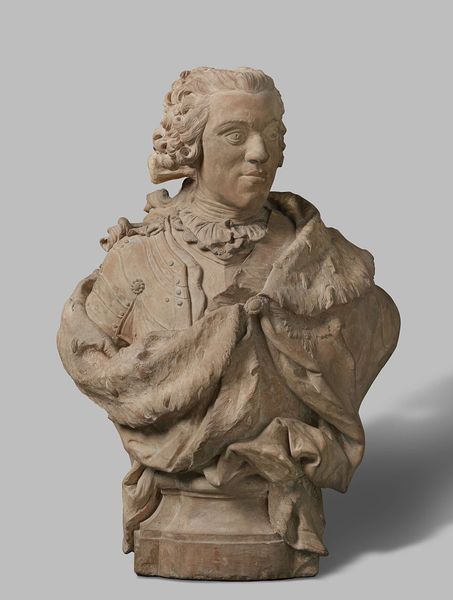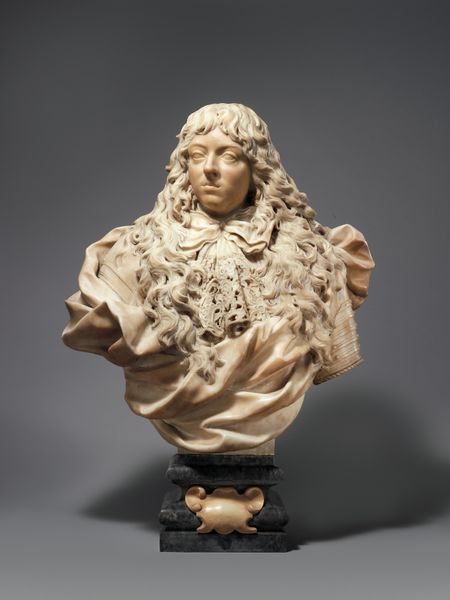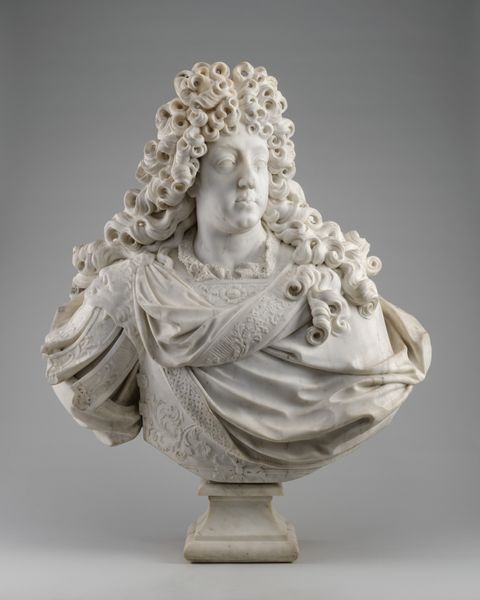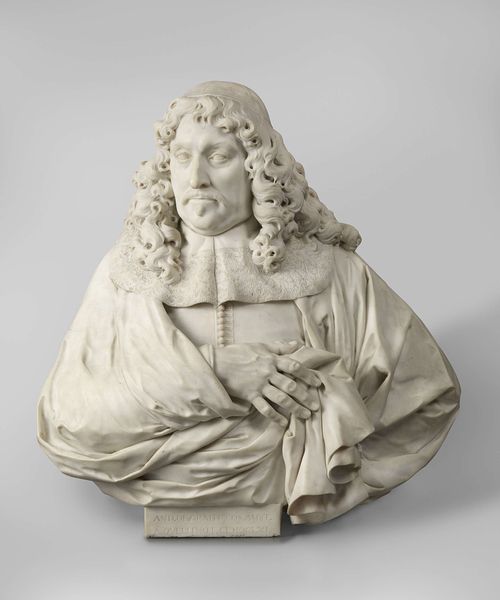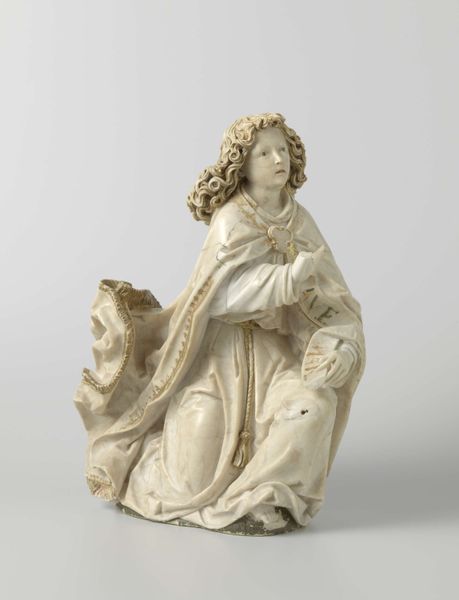
carving, metal, relief, sculpture, ivory
#
portrait
#
carving
#
baroque
#
metal
#
sculpture
#
relief
#
classical-realism
#
figuration
#
sculpture
#
ivory
Dimensions: height 12.3 cm, width 8.9 cm, thickness 4.0 cm
Copyright: Rijks Museum: Open Domain
Editor: Here we have "Two Unidentified Young Men," an ivory carving by Rombout Verhulst, around 1660. The craftsmanship is incredible. The figures are so lifelike, almost emerging from the background. But the use of ivory also raises questions, doesn't it? What do you see when you look at this piece, considering its historical context? Curator: Well, seeing this artwork, I am immediately struck by the intersection of artistic skill and material privilege. Ivory, of course, signals access to global trade networks shaped by colonial exploitation. These portraits, likely commissioned by or for members of the Dutch elite, become powerful statements about social status. Who were these men and how did the cultural institutions of their day facilitate, even celebrate, the practices that gave them the means to commission such a piece? Editor: That's a good point. It's hard to ignore the problematic origin of the material itself. The detail in their clothing, the way their hair is rendered…it all feels so celebratory. How does that celebratory aspect then tie into the politics of portraiture at the time? Curator: Exactly. Consider how portraiture served as a tool for solidifying social hierarchies. These aren't just depictions of individuals; they are performances of identity designed to reinforce specific power structures. The choice of ivory further amplifies that message. The work's survival in collections like the Rijksmuseum, speaks to how cultural institutions have historically played a role in preserving and, at times, sanitizing these narratives of power. Editor: So, beyond its artistic merit, the sculpture also stands as a testament to the complex socio-political landscape of the 17th century. It's a reminder that art is never created in a vacuum. Curator: Precisely. Looking critically at pieces like this challenges us to consider the ongoing impact of historical forces that continue to shape our world today, even through what is displayed – and how – in our museums. Editor: Definitely something to think about. I'll never look at an ivory carving the same way again.
Comments
rijksmuseum about 2 years ago
⋮
There is a striking resemblance between the features of these two young men. They are probably brothers. The oldest (at right) is possibly a soldier or a member of a militia company. The gesture he makes with his fingers is curious. It may represent a measure, in which case he is advocating temperance. The jutting out of the young men’s elbows carved in high relief is artistically daring.
Join the conversation
Join millions of artists and users on Artera today and experience the ultimate creative platform.
